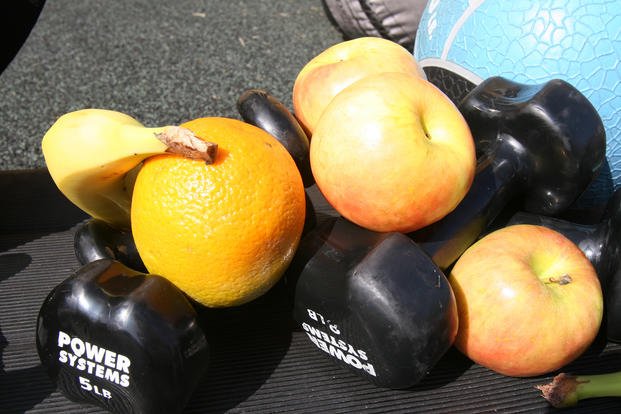Soldiers and their loved ones often make fitness goals before deployment in order to surprise friends and family upon their return. There are many stories of spouses losing significant weight during a deployment, but this is the story of a soldier taking advantage of some downtime on the forward operating base (FOB) to lose weight -- a challenging goal of 100 pounds. Getting stuck on the weight-loss slide can occur in the last 25% of the goal.
Here is an email from the deployed soldier and my answer to help get over the progress plateau:
Stew,
I am on month 10 of 12 of my deployment. Believe it or not, when I began my mobilization, I was 330lbs at 6'4". I managed to lose a total of about 75lbs, I fluctuated between 255-260 and stopped losing any weight at all about a month to two months ago. I could really use some help with these last pounds. They seem to be located just above and just below my waist. I have access to a top-of-the-line gym at my location and food from the local DFAC, which has a salad bar, grilled chicken, eggs to order and all the good stuff!
Help a soldier out?
First of all, great job with the progress you've made so far. That is significant. As with anything in life, when we have an excess of something, it is easy to lose a large portion of it, so your massive weight loss is understandable. But that last 25% can be a challenge. Don't fear. There are methods to push yourself off that plateau and back into weight-loss mode. All the options require you to make a change in what you are doing.
Here are some options:
Change Your Food Intake
This can be a simple decrease in calories, increase in water consumption or a major change in how, what and when you eat. First consider adding more water. At your current weight and activity, you can drink a gallon of water a day. And if you are living in arid environments, you need more water.
Second, try to decrease your sugar intake if you are going to reduce calories. That means breads, pastas, sweets, sodas, juice drinks, etc.
Third, try not to snack between meals; this is the best time to replace food with a bottle of water. Grab some water instead of a cookie, a handful of M&Ms, etc.
Start a Food Journal
Any time you are making a change in eating habits, keep notes. Make a food diary, see where you are going wrong and what you are doing right. Often, once you see what you are eating, how much you are eating and how little water you are drinking, you will know what to fix.
Plus, when you know that you have to keep track of the foods you eat, you become naturally pickier with what goes in your mouth.
Change Up the Routine
If you have been doing a certain type of workout routine, it's time to make a change. Add more cardio to your day and arrange your schedule so you do your cardio after your resistance workouts. Add a different cardio workout. If you just walk or bike, try jogging, swimming, rowing or elliptical workouts. If you hate machines, try something that keeps you more engaged, like a resistance pyramid workout on a bike, elliptical or treadmill.
A pyramid just means you are increasing the resistance, speed or incline each minute that you are on the machine. Once you reach a point of failing to keep up with the machine, return in reverse order. This often can take 20-30 minutes, depending on your fitness level, and create a nice warmup, max-out and cooldown all rolled into one cardio workout.
Add Weights
Another option is to add in weight training if you have not started. A simple machine circuit, mixed with calisthenics and abdominal exercises, goes a long way with a beginner weight routine.
Train Smarter
Take a class at the gym. Group fitness, spin classes and TRX class workouts are fantastic ways to add a new element to your routine.
If you try a few of these recommendations, you could drop another 10-15 pounds (or maybe even 20 pounds) in your last few months on deployment. I hope you do well. Thanks for your service and have fun surprising your loved ones when returning home.
Note: This method will work for anyone having trouble with weight loss.
Stew Smith is a former Navy SEAL and fitness author certified as a Strength and Conditioning Specialist (CSCS) with the National Strength and Conditioning Association. Visit his Fitness eBook store if you're looking to start a workout program to create a healthy lifestyle. Send your fitness questions to stew@stewsmith.com.
Want to Learn More About Military Life?
Whether you're thinking of joining the military, looking for fitness and basic training tips, or keeping up with military life and benefits, Military.com has you covered. Subscribe to Military.com to have military news, updates and resources delivered directly to your inbox.



















